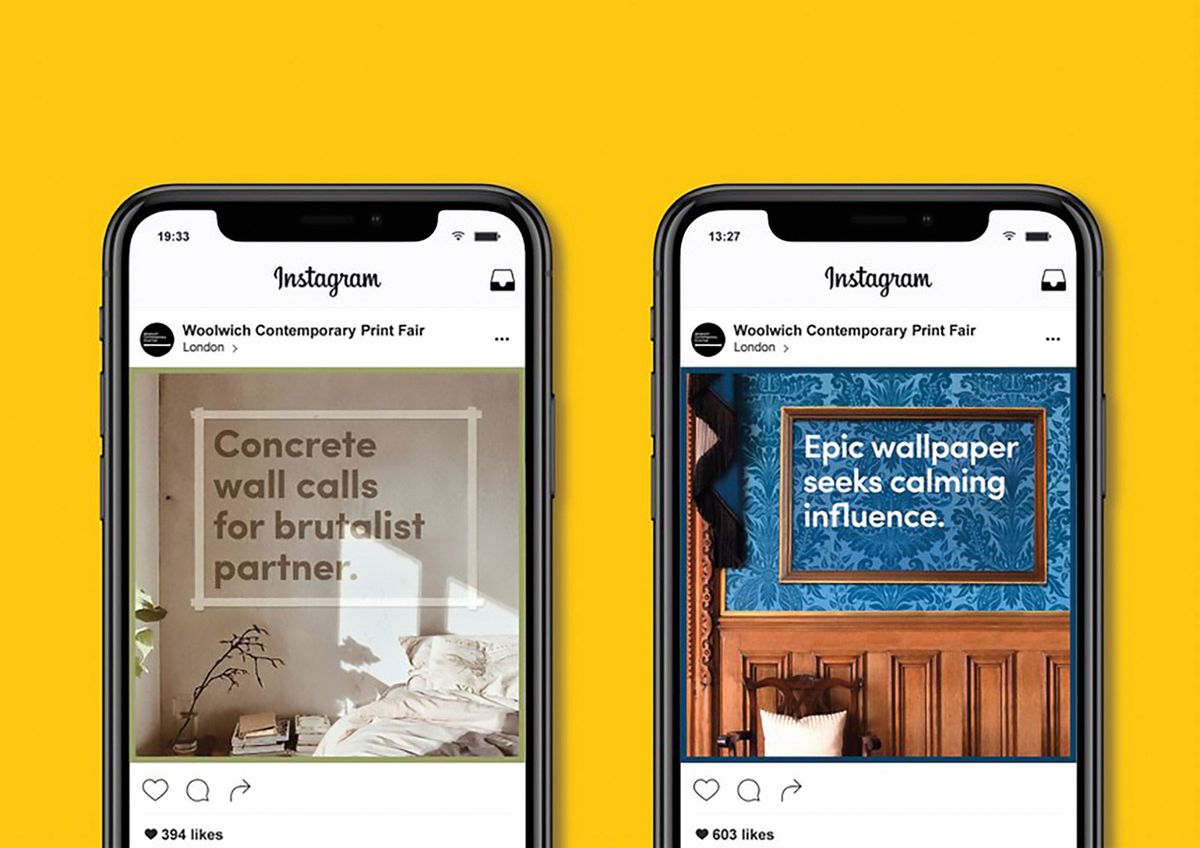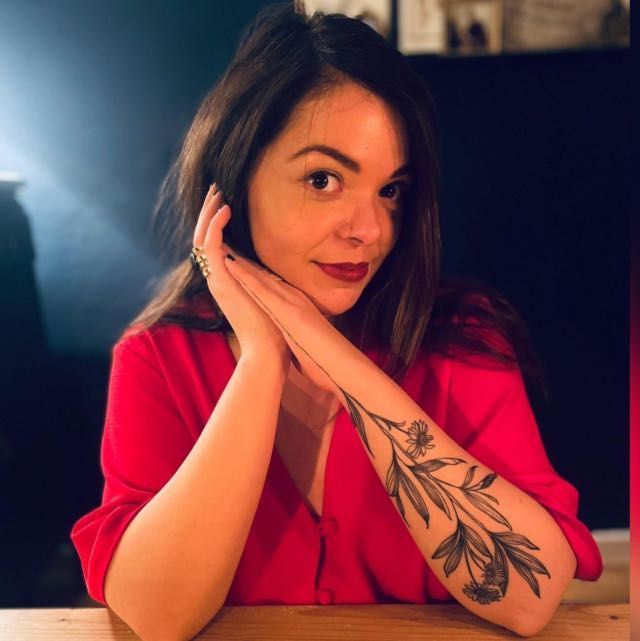A hashtag recently caught my eye: #findartthatfits. It’s the initiative of Woolwich Contemporary Print Fair, a London fair dealing solely in contemporary printmaking. The hashtag is part of an art advisory campaign: prospective buyers are invited to post a photo of their “art-hungry space” on Instagram, tag the fair and use the hashtag—as well as hashtagging any adjectives about the kind of art they are looking for—to which someone from the team will respond with suggestions from the fair’s portfolio of artists. The idea is an interesting hybrid of the digital and the personal, and I couldn’t help but wonder—did anyone actually try it?
“In the first year it was really popular as a novelty, and last year it was taken more seriously, I imagine because of lockdown,” says Lizzie Glendinning, the co-founder of the fair. She adds that Instagram was an obvious fit for the campaign: “It’s visual, responsive, interactive. It is the right place for us and our collectors to engage in design-led features and hopefully enjoy interacting with us.” Engage is the key word here. As ever, it is hard to say that the Instagram activity directly led to purchases. “[The campaign] increased engagement, which I believe in some cases has enhanced sales,” Glendinning says. “But for us, especially currently, it’s a great way to create conversations and fun interactions with new audiences to introduce them to our unique offering.”
This concept led me to question how art advisers, for whom experiencing physical spaces seems essential to their practice, are faring during the pandemic. How are they using Instagram? For Angeliki Kim Jonsson, who runs the curating and art advisory firm Dynamisk, Instagram is more of a place to connect with people and an archive for her business, rather than a way to scope out interiors to fill. Daniel Turriani, the founding director of the art advisory and investment company JT Art Asset, agrees. “I’ve got in touch with great people through Instagram—artists, collectors and people from different walks of life—and ended up doing some good business with some of them,” he says.
Jonsson says that seeing spaces in person is less important to art advisory than you would think: “I believe that you will always manage to find the perfect space for a great work of art, but it doesn’t work the other way around.”
It seems that it’s not that important to see the art physically. “For experienced collectors it is becoming the norm; I have clients spending millions of dollars on art without any physical viewing,” Turriani says. “I try to be the eyes for my collectors as I attend multiple exhibitions, museum shows, studio visits and art fairs internationally,” adds Jonsson. So, if seeing the space and the art in real life is no longer considered essential, then maybe Woolwich Contemporary Print Fair is on to something. Perhaps we will be seeing a great deal more hashtag-consultancy in the near future.



